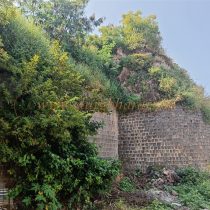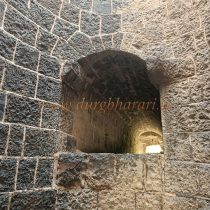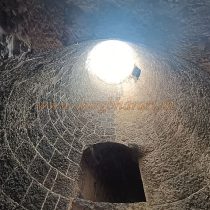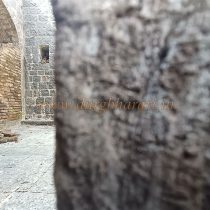DOMRI
TYPE : FORTRESS
DISTRICT : BEED
HEIGHT : 0
While wandering around the forts around Beed city, we come across numerous small and large forts. It is difficult to remember all these forts, but some forts remain in our memory forever due to their unique architecture. Among them is the fortress at Domri village in Patoda taluka of Beed district. Due to the construction of a special well in the fortress, this fortress remains in our memory forever. Domri village is at a distance of 28 km from Beed city and 18 km from Patoda taluka. Located in the central part of the village, this fortress is built on a hill and is visible from a distance, so there is no need to ask for the address of the fortress. This square-shaped fortress is built on about five acres and has three small bastions at the three ends of the fort.
...
The entire construction of the fort is made of stone. To reach this door we have to climb about 20-22 steps. The construction of the fortress is still in good condition from the outside and there are three stone lotuses carved in the facade of the main gate of the fortress. Looking at the overall construction of the fortress and the stone used in it, it seems that it was built during the Nizam period. The stone arch of the fortress door and its wooden doors are still in good condition. As the descendants of the fortress do not live here now and the door of the fortress is locked, we could not see anything from inside. The thing that impressed me in the construction of this fortress was the well in one of the bastions of this fort. This bastion is very unique and inside this bastion there is a deep well completely built in stone. There are total three stages to draw water from this well and even today water can be drawn from these three stages. The first stage is the uppermost side of the well. This step is the well bank and it is located above the ramparts, so even the person on top of the ramparts can draw water directly from it without having to go elsewhere for water. The second stage of this is that the person who is in the fort under the ramparts can also come to the central part of the well through a small tunnel and draw water from the well. The third stage after this is that a person outside the fortress can enter the bastion of fort from the outside and draw water from the well but cannot enter the fortress. Such a different bastion can be seen in the construction of this fortress. Half an hour is enough to see the entire fortress and its surroundings. Although no one knows much about the history of it, this fortress is known as “Domri Gadhi” of Vinayak Deshmukh in the village. Vinayakrao Deshmukh was known as a great chief in Domri and surrounding villages during the Nizam and British era. The era of Vinayakrao Deshmukh in this fortress of Deshmukhs was the golden age of the fortress. He had contact with many surrounding villages. He had a large grocery store in Domri. Every morning five bullock carts used to go to Ahmednagar to fetch goods from here. From this we can see the income of his business but Vinayakji was killed and all this came to a standstill. This fortress was probably built during the reign of Vinayakrao Deshmukh. It is built for trade, has no historical background. But locals say that many skirmishes against the British and the Nizam took place around the Domri Fortress. One must visit this fortress at least once to see the distinctive bastion of “Domri Gadhi” and its well.
© Suresh Nimbalkar


















